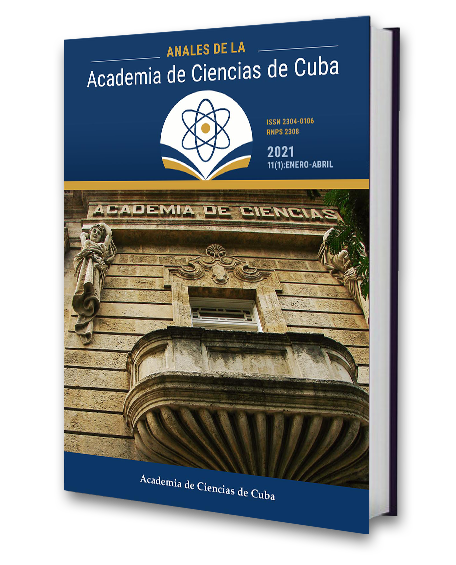Sticholysin II encapsulated into liposomes enhances an antigen-specific cytotoxic T lymphocytes response
Keywords:
pore-forming proteins, liposomes, antigen presenting cells, antigen cross-presentation, cytotoxic T lymphocytesAbstract
Introduction: Vaccine strategies to enhance CTLs response are still a challenge since it is necessary to favor the exogenous antigens (Ag) cross-presentation by antigen presenting cells (APCs). For this purpose, liposomes encapsulating bacteria pore-forming proteins (PFPs) have been used. Objective. To explore the ability of liposomes co-encapsulating the Ag ovalbumin (OVA) and sticholysin II (StII), a PFP produced by Stichodactyla helianthus, to induce a CTL response, functional in a tumor model.
Methods: Liposomes co-encapsulating OVA and StII were prepared by dehydration-rehydration (Lp/OVA/StII). The response of CTLs was evaluated, as well as the antitumor activity in a preventive setting. The ability of StII to stimulate maturation of dendritic cells (DCs) in vitro was also explored.
Results: Lp/OVA/StII enhanced the OVA-specific CTL response and antitumor activity in mice challenged with the E.G7-OVA tumor. StII induced the maturation of DCs in vitro, which was dependent on the Toll-like receptor 4 (TLR4), with a contribution to the response of CTLs induced by the liposomal formulation in vivo. Lp/OVA/StII favored in vitro the cross-presentation of OVA and the activation of CD8+ T cells by macrophages, but not by DCs. These results are the first evidence that StII encapsulated into liposomes functions as a vaccine platform to induce a robust CTL response, with a contribution that goes beyond its ability to form pores in membranes.
Downloads
Downloads
Published
How to Cite
Issue
Section
License
The journal Anales de la Academia de Ciencias de Cuba protects copyright, and operates with a Creative Commons License 4.0 (Creative Commons Attribution-NonCommercial License 4.0). By publishing in it, authors allow themselves to copy, reproduce, distribute, publicly communicate their work and generate derivative works, as long as the original author is cited and acknowledged. They do not allow, however, the use of the original work for commercial or lucrative purposes.
The authors authorize the publication of their writings, retaining the authorship rights, and assigning and transferring to the magazine all the rights protected by the intellectual property laws that govern in Cuba, which imply editing to disseminate the work.
Authors may establish additional agreements for the non-exclusive distribution of the version of the work published in the journal (for example, placing it in an institutional repository or publishing it in a book), with recognition of having been first published in this journal.
To learn more, see https://creativecommons.org






